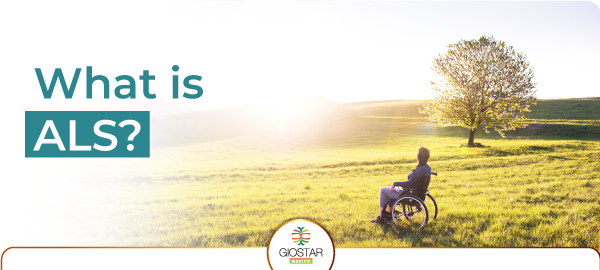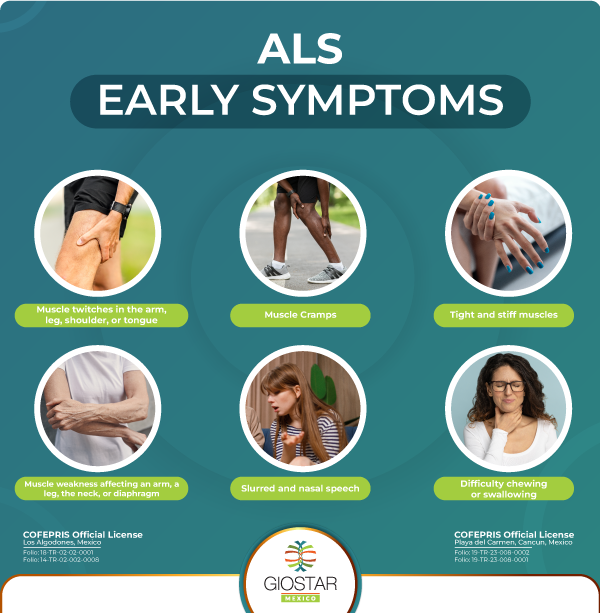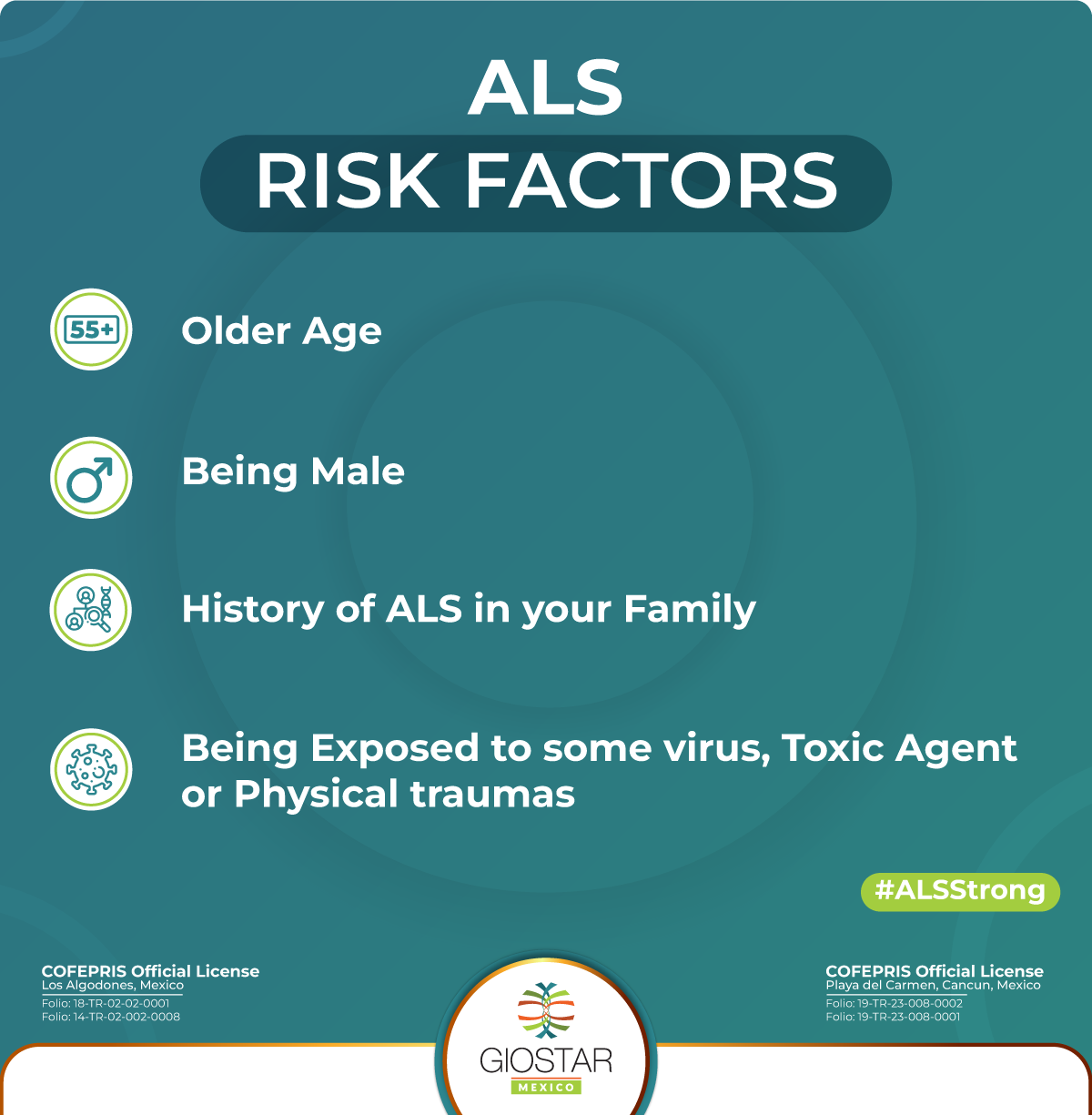Everything You Need to Know About What Is ALS
 Amyotrophic lateral sclerosis (ALS) is a neurodegenerative disease of the human motor system that progressively affects the nerve cells in the brain and spinal cord, causing loss of muscle control. “Lateral” identifies the areas in a person’s spinal cord where portions of the nerve cells that signal and control the muscles, known as motor neurons, are located. As these cells degenerate and die, they stop sending messages to the muscles, causing them to weaken, start to twitch, and waste away.
This deterioration leads to scarring or hardening (“sclerosis”) in the region. For many years, ALS was popularly known as Lou Gehrig’s disease, after the famous baseball player who was diagnosed with it and who brought global awareness to this condition in the 1940s.
Currently, there is no cure for ALS. However, treatments continue to advance, and certain options may help slow the progression of the condition and improve quality of life.
Understanding what ALS is and how it progresses is essential, as its first signs often appear subtly.
Amyotrophic lateral sclerosis (ALS) is a neurodegenerative disease of the human motor system that progressively affects the nerve cells in the brain and spinal cord, causing loss of muscle control. “Lateral” identifies the areas in a person’s spinal cord where portions of the nerve cells that signal and control the muscles, known as motor neurons, are located. As these cells degenerate and die, they stop sending messages to the muscles, causing them to weaken, start to twitch, and waste away.
This deterioration leads to scarring or hardening (“sclerosis”) in the region. For many years, ALS was popularly known as Lou Gehrig’s disease, after the famous baseball player who was diagnosed with it and who brought global awareness to this condition in the 1940s.
Currently, there is no cure for ALS. However, treatments continue to advance, and certain options may help slow the progression of the condition and improve quality of life.
Understanding what ALS is and how it progresses is essential, as its first signs often appear subtly.
ALS symptoms
The main symptoms appear gradually as the condition progresses, eventually this develops into more notorious signals. Understanding what is ALS can help identify early signs. Early signs of ALS can be:- Muscle twitches in the arm, leg, shoulder, or tongue
- Muscle cramps
- Tight and stiff muscles (spasticity)
- Muscle weakness affecting an arm, a leg, the neck, or diaphragm
- Slurred and nasal speech
- Difficulty chewing or swallowing

Muscle Weakness
Muscle weakness and twitching are often among the first ALS symptoms, and they’re important signals not to ignore. While occasional muscle twitches are common and usually harmless, ongoing twitching, muscle cramps, or weakness that continues for several weeks may be an early sign that something more serious is happening.- Although not every twitch or cramp points to ALS, noticing persistent or progressive muscle changes is a reason to seek medical evaluation.
Motor Function and Coordination
Changes in motor function and coordination are also often among the early signs of ALS. Around 3%–5% of ALS patients are diagnosed with frontotemporal dementia (FTD), a dementia of non-Alzheimer’s type with symptoms of behavioral changes, frontal executive deficit, and impaired handling of language.In more advanced stages, speech may be affected (dysarthria), with breathiness or tremors, as well as involuntary spasms of the vocal muscles (spasmodic dysphonia).Laryngeal dysfunction may also occur, where the larynx does not move properly during swallowing, increasing the risk of aspiration. - Patients at some point may lose the capacity to breathe and end up connected to a ventilator.
- Swallowing difficulties (dysphagia) can gradually appear, starting with tougher foods or thin liquids, and may affect proper nutrition as ALS progresses.
- Speech and Swallowing Difficulties
- Because these changes develop gradually, they may be mistaken for normal aging or simple clumsiness. They can start in one hand or arm, and simple tasks become complicated, such as buttoning a shirt or locking a door. However, paying attention to persistent difficulties in coordination or strength is essential, as they may point to ALS or another neurological condition.
ALS Causes
There’s not a specific cause of this disease; instead, physicians call risk factors that make it more likely to develop ALS. There are some specific factors that are very important to mention: older age, being male and a history of ALS in your family. However, there are other environmental risk factors like being exposed to some virus, toxic agents or physical traumas.Who is more likely to get ALS?
A risk factor is any condition or habit, such as high blood pressure or smoking, that may increase the chances of developing a health issue. It’s important to remember that having a risk factor doesn’t guarantee a diagnosis, and lacking one doesn’t mean you’re completely protected. Some risk factor for ALS to considerate are:- Age
- Biological sex

Is ALS genetic?
Most cases of ALS are not inherited. Although having family members with ALS is a risk factor, the risk is very low, and most won’t develop ALS. About 90% of people diagnosed have no family history of the disease, a form known as sporadic ALS. The causes of sporadic ALS are not fully understood but may involve a mix of environmental and genetic factors. Around 10% of all ALS cases are familial, where multiple members may be affected. Familial ALS is often autosomal dominant, meaning a parent with a gene mutation linked to ALS has a 50% chance of passing it to each child. Men and women are equally likely to inherit the mutation.ALS Statistics
| Statistic | Data |
| New ALS Diagnoses in the U.S. | 5,600 per year. |
| Median Age of Diagnosis | 55 years. |
| Global ALS Cases | More than 450,000 people. |
| Familial ALS | 10-15% of cases; at least two first- or second-degree relatives affected (Caroline Ingre, P.M., 2015). |
| Life Expectancy | Between 2 to 5 years. |
Discover How ALS Stem Cell Treatment Can Help
Stem cell therapy not only focuses on treating the symptoms but on actually slowing down the disease’s progression, stopping its advance and reversing the damage done to tissue and organs. Regenerative medicine works in 3 stages: 1- Slow Down 2- Stop 3- Regenerate Analyses in patients at Giostar Mexico have shown that stem cell therapy not only slows the progression of ALS but also improves motor function in patients. Stem cells for ALS can significantly improve the symptoms, including muscle weakness, reduce the damage on muscle, and improve speech and swallowing.Types of stem cells for ALS
There are several types of stem cells used in ALS stem cell treatment, each offering unique benefits:- Neural Stem Cells
- Mesenchymal Stem Cells
- iPSC – Derived Motor Neurons
Types of Application
Depending on the patient’s condition, stem cell applications allowed in Mexico include:| Intravenous (IV) | Stem cells are injected into the bloodstream with mannitol to expand blood volumes in the central nervous system to ensure they reach the affected area. |
| Intrathecal (IT) | This method involves delivering stem cells directly into the cerebrospinal fluid, the clear liquid that surrounds the brain and spinal cord. |
| Locally | Stem cells are directly delivered in the affected area. |
How much does stem cell therapy cost?
The cost of Stem Cell Therapy needs to be determined by our expert medical team, as prices depend on the specific condition and personalized medical recommendations. Our dedicated team of medical professionals carefully evaluates each patient’s unique health situation to recommend the most effective therapy. At Giostar Mexico, our ALS stem cell treatment includes a comprehensive approach designed to achieve the optimal results:- Laboratory protocol developed by Dr. Anand (activation of the stem cells to direct them towards the affected tissue or organ)
- 1 – 3 stem cell vials (35 – 105 million stem cells)
- 1 – 10 billion exosomes (volume depends on the doctor’s personal evaluation of each patient)
- Oxygen Therapy
- Body preparation
- Medical Consultation
- Dietitian Follow-up post-therapy
- Transportation hotel-clinic in local shuttle
- Lodging (available in our Clinic in Algodones) at Hotel Hacienda or Hotel Cielito Lindo
- Preferential prices for future reinforcements/applications ( when applicable).
Giostar Mexico Stem Cell Therapy
Being part of the last three decades of innovative discoveries in the research-based area of regenerative medicine, stem cell therapy promotes the reduction and stoppage of degenerative diseases or conditions, such as ALS, physical injuries and aging, bolstering the regeneration of damaged tissues, bodily processes and overall well-being. Giostar Mexicospecializes in medical tourism, receiving patients from all over the world. With the acquired understanding based on scientific research, we are able to provide personalized protocols to each patient. Through specialized allogenic mesenchymal adult stem cells, our regenerative therapy concentrates stem cells in the targeted area, organ or immune system, helping the body stop the progression of a disease or condition and begin regeneration.References
- ALS Association. (2021, April 2021). ALS Association. Retrieved from What is ALS?: https://www.als.org/understanding-als/what-is-als
- Caroline Ingre, P. M. (2015). Risk factors for amyotrophic lateral sclerosis. Clinical Epidemiology, 181-193.
- Karissa C. Arthur, A. C. (2016). Projected increase in amyotrophic lateral sclerosis from 2015 to 2040. Nature communications.
- Lewis P. Rowland, N. A. (2001). Amyotrophyc Lateral Sclerosis. The New England Journal of Medicine .
- Matthew C Kiernan, S. V. (2011). Amyotrophic lateral sclerosis. Lancet.
- National Institute of Neurological Disorders and Stroke . (2021, May 26). NIH. Retrieved from Amyotrophic Lateral Sclerosis (ALS) Fact Sheet: https://www.ninds.nih.gov/amyotrophic-lateral-sclerosis-als-fact-sheet
- ALS Association. (n.d.). ALS Association. Retrieved from Lou Gehrig and the History of ALS: https://www.als.org/understanding-als/lou-gehrig
- ALS United. (n.d.). ALS United. Greater New York. Retrieved from Very Early ALS Symptoms: What to Look Out For: https://als-ny.org/very-early-als-symptoms-what-to-look-out-for/
- ALS Association. (2020). ALS Association. Retrieved from Factsheet from the ALS Association
- FYI: Familial Amyotrophic Lateral Sclerosis (FALS) and Genetic Testing: https://www.als.org/navigating-als/resources/familial-amyotrophic-lateral-sclerosis-fals-and-genetic
- Mehta, P., Raymond, J., Nair, T., Han, M., Berry, J., Punjani, R., … Horton, D. K. (2025). Amyotrophic lateral sclerosis estimated prevalence cases from 2022 to 2030, data from the national ALS Registry. Amyotrophic Lateral Sclerosis and Frontotemporal Degeneration, 26(3–4), 290–295. https://doi.org/10.1080/21678421.2024.2447919


